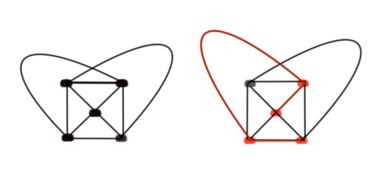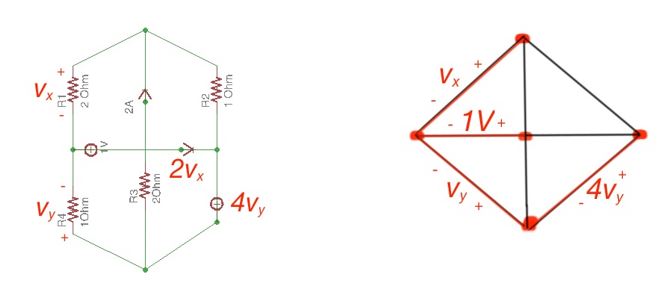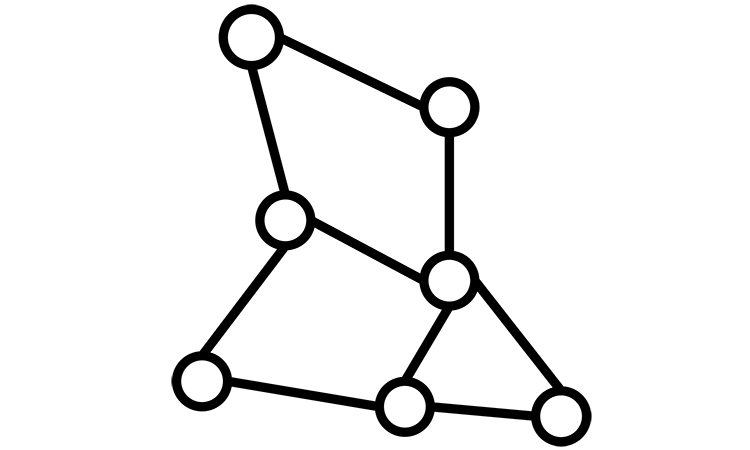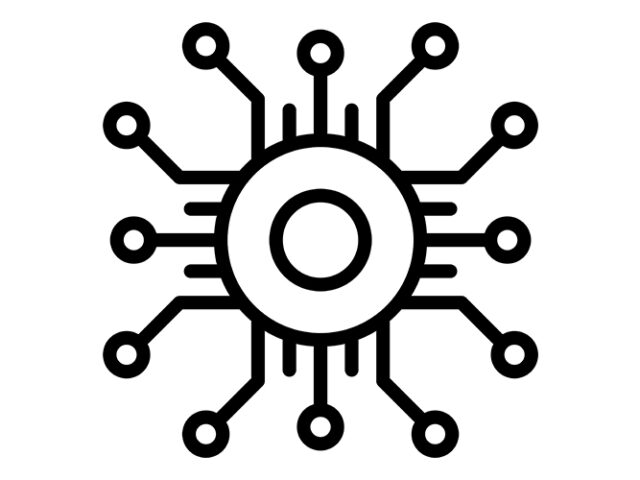It is possible to generalise the Nodal analysis method to use it for all electric circuits. This means the nodal method should work with all kinds of topology. First, let us define the term of topology. Topology is a branch of mathematics which is concerned with properties of space which are preserved under continuous deformations, like blending, stretching or twisting with the provision that no parts will be cut out. The electric circuit also can be presented as a set of lines, where all the elements are suppressed, branches are marked with lines, and nodes as heavy dots. This representation is called a linear graph, or simply a graph.
We know some topology terms that are applicable for electric circuits:
Node – is a point at which two or more elements are connected;
Branch – is a path which connects two nodes;
Loop – is a set of branches which form a closed path which goes through every node;
Mesh – is a closed path which contains only one loop;~
Graph – an electric circuit representation where all the branches are marked with lines. Elements are suppressed and nodes presented as heavy dots;
Planar graph – is a graph which can be presented on a plane without crossing branches;
Non-planar graph – is a graph which cannot be presented on a plane without crossing branches.
Two more important topology terms are:
Tree – is a set of branches connecting any node to another one, and does not contain any loop;
Link– is any branch of a circuit, which is not a part of a tree.

The quantity of links and branches that are needed for a tree can be estimated easily. Consider nodes in a graph, branches are needed to construct all possible trees for a graph. And the quantity of links is the following:
The idea of the general nodal method is the following – If the circuit is given, a graph should be drawn. One proper tree should be chosen. Each branch should assign voltage between nodes. So the tree will contain voltages, if there are nodes on a graph. equations can be drawn according to the first Law of Kirchhoff. The remaining node is the reference node. If there are voltage sources in a circuit, they should be placed on the branches of the tree.





